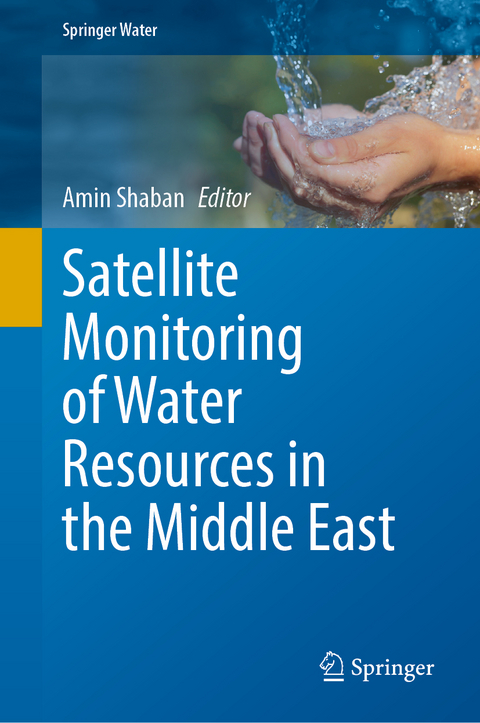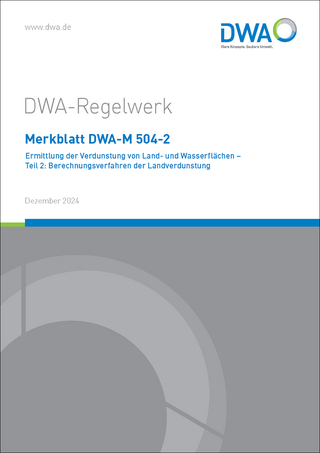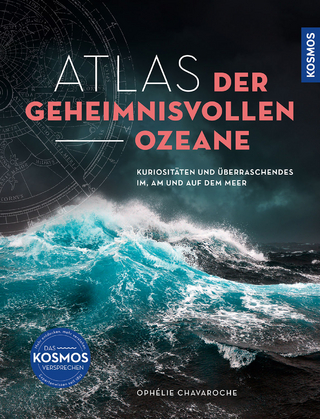
Satellite Monitoring of Water Resources in the Middle East
Springer International Publishing (Verlag)
978-3-031-15548-2 (ISBN)
This book presents both updated and new measurements on water resources from selective pilot areas form the Middle East. Demand for water has become very crucial notably in arid and semiarid regions like in the Middle East. The changing climate and the increased population are the most striking challenges on water resources in this region where the largest part of its territory is dry lands and deserts with minimal precipitation and high evaporation rates, and thus, the average per capita of water does not exceed 25 m3/year. This resulted in developing many studies and researches in different Middle East countries to clearly identify and assess the hydrological characteristics of the available water resources and to explore new resources in order to secure balanced water supply/demand.
As a first of its type, this book introduces comprehensive knowledge on the successful reports of the use of satellite images in water studies in the Middle East, and the economicvalue resulted from adopting these techniques. Based on illustrated case-studies the book will represent a significant resource for a large number of experts, academics, researchers, engineers and different-level stakeholders including the decision makers.Amin Shaban is a Director of Researsh at the Lebanese National Council for Scientific Research (CNRS-L), Lebanon; and Professor at the Lebanese University, as well as he has been as a Consultant for several international entities (e.g. UNESCO-IHP, UN-ESCWA , ENPI-CBCMES-European Commission, etc.) He has a Master degree from the American University of Beirut; Ph.D. from Bordeaux-I University, France; and he has achieved a Fulbright Program in the United States, at Boston University. He is specialized in water resources management including the use of satellite images to study surface and subsurface water bodies, monitoring water systems, groundwater exploration, watershed management, climate change impact on water, as well as the influencers on water supply. Dr. Shaban is the representative for Lebanon in many international programs, including the International Hydrological Program (IHP) and SDG-6. He is also committed as representative for many national committees. Moreover, he is a membership in different scientific assemblies, such as American Geophysical Union (AGU) and International Association of Hydrological Sciences (IAHS). Dr. Shaban has been given several honorary awards, such as the Award for Career Excellence in Scientific Research; Award of Distinguished Researchers in Lebanon; Award of Best Arab Researcher in Integrated Water Resources Management; as well as the Appreciation of CNRS-L for his distinguished scientific productivity. Dr. Shaban has more than 60 Publications in International Journals, as well as published in more than 50 International proceedings, a number of scientific books on water resources, and produced several book chapters and produced many technical studies. Dr. Shaban has been the Principal Investigator for more than 15 research projects and participated in more than 25 projects. He has a teaching experience of more than 15 years, and supervised many Master and Ph.D. dissertations.
1. Fundamentals of Satellite Remote Sensing.- 2. Water Resources in the Middle East.- 3. The Suitability of Satellite Remote Sensing and GIS Technologies For Mapping, Monitoring and Managing Water Resources in The Middle East.- 4. Atmospheric Rivers and Precipitation in the Middle East and North Africa (MENA).- 5. Inventory of Shared Water Resources in Western Asia Revisited: Selected Pilot Areas for the Application of Remote Sensing.- 6. GIS-based multi-criteria approach to assess water resources vulnerability in a changing climate over the Arab Domain.- 7. Unraveling the spatio-temporal dynamics of satellite-inferred water resources in the Arabian Peninsula.- 8. A Technical Note on Least Squares Mascon Fitting to GRACE Satellite Data to Estimate Total Water Storage Changes in The Middle East.- 9. Spatial-Temporal Change of a Dam Lake Area Using Remote Sensing and Meteorological Drought Indices.- 10. Forecasting Domestic Water Demand using Meteorological and Satellite data: Case study of Greater Beirut Area.- 11. MODIS Satellite Images and TRMM Products to Compare Rainfall and Streamflow along the Coastal Rivers of Lebanon.- 12. Water balance and demand for different environmental changes and management scenarios in the Hasbani Basin, Lebanon using WEAP model and remotely sensed data.- 13. Agricultural Water Management in the Nile Delta Using Remote Sensing Techniques.- 14. Studying Hydrological Characteristics of the West Bank and Gaza Strip, Palestine Using GIS and Remote Sensing Data.- 15. Landsat Satellite Images for Lineaments Detection: A Tool to Identify Groundwater Productivity in Lebanon.- 16. Using information from remote sensing to estimate groundwater: GRACE and Sentinel-1 satellites.- 17. Volcanic Terrains Reveal Bright Hydrogeological Prospects in Saudi Arabia: A GIS & RSA Linked Research on Harrat Rahat.- 18. Regional mapping of groundwater potential zones inthe Saudi Arabia using remote sensing and machine learning algorithms.- 19. A DRASTIC-based Fuzzy C-Means Clustering Technique for Evaluating Groundwater Vulnerability under Uncertainty.- 20. Prospects of Retrieving Non-Optical Water Quality Properties with Remote Sensing Techniques.- 21. The potential of different reflectance based algorithms to retrieve Phycocyanin concentration through remote sensing. Application to a hypereutrophic Mediterranean lake.- 22. Remote sensing of water quality for human use of Shat Al-Hilla, Iraq.
| Erscheinungsdatum | 18.10.2022 |
|---|---|
| Reihe/Serie | Springer Water |
| Zusatzinfo | XI, 413 p. 168 illus., 158 illus. in color. |
| Verlagsort | Cham |
| Sprache | englisch |
| Maße | 155 x 235 mm |
| Gewicht | 799 g |
| Themenwelt | Mathematik / Informatik ► Informatik |
| Naturwissenschaften ► Geowissenschaften ► Hydrologie / Ozeanografie | |
| Naturwissenschaften ► Geowissenschaften ► Meteorologie / Klimatologie | |
| Schlagworte | Alternative Water Resources • Cartography • Groundwater Exploring • Image Processing • Mapping Water Basins • Middle East Region • Surface and subsurface water resources • water scarcity |
| ISBN-10 | 3-031-15548-3 / 3031155483 |
| ISBN-13 | 978-3-031-15548-2 / 9783031155482 |
| Zustand | Neuware |
| Informationen gemäß Produktsicherheitsverordnung (GPSR) | |
| Haben Sie eine Frage zum Produkt? |
aus dem Bereich


